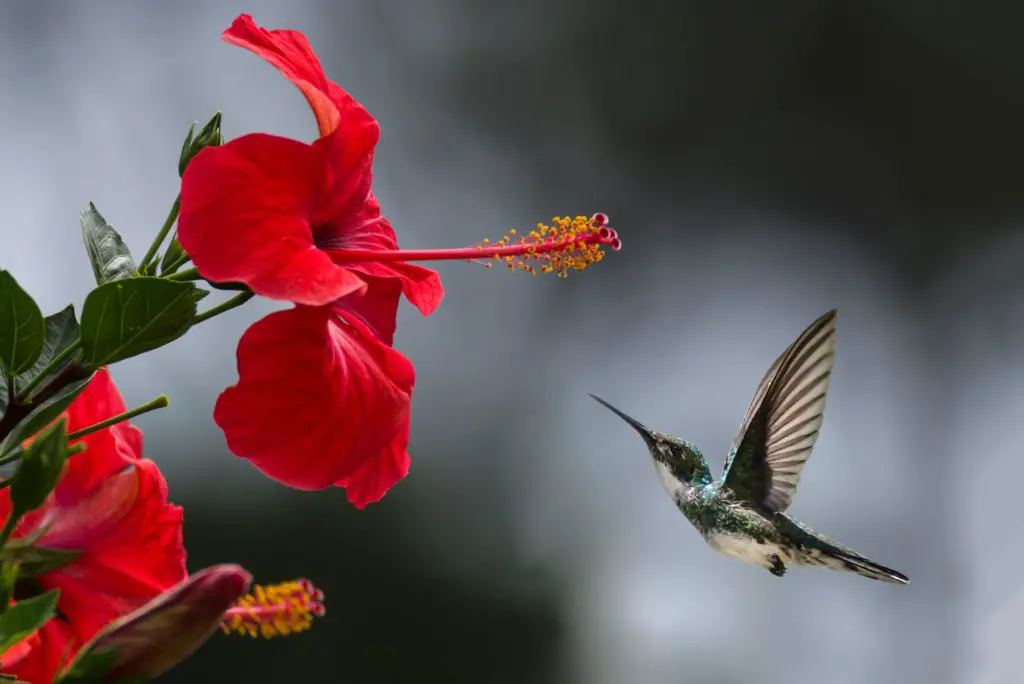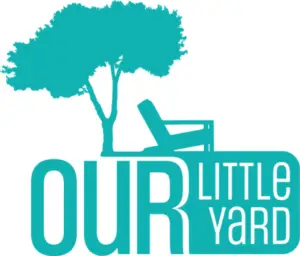When my middle daughter was 2, we purchased a hummingbird feeder. Nothing fancy – just a cheap, red plastic device that we bought at our local hardware store. She loved watching the hummingbirds zip right up to our kitchen window that summer. “Hum bird” she would yell, as it lingered long enough for us to see it before it zipped off to its next destination. As she grew, she learned how to help mix the sugar water and colored solution to refill our hummingbird feeder. It’s become one of our favorite rituals to welcome spring.
Why Are Hummingbirds Attracted to Red?
Hummingbirds have eyes that are highly attuned to bright colors, primarily red and yellow, that represent flowers that are reliable nectar sources. This does not mean that they are not attracted to other bright colors, but does explain why those classic red hummingbird feeders are a tried and true beacon for the hummingbirds. Because hummingbirds move so fast and with such agility, they rely on instant signals to quickly and consistently find their next food source. They are well equipped for this, with strong adaptations for vision that allow them to see ultraviolet light that humans are unable to see. You could almost say that hummingbirds have enhanced color vision.

How Can I Attract Hummingbirds?
In addition to hanging a hummingbird feeder, adding flowering plants with warm and bold colors, like red, yellow, orange, or pink, to your landscape will make your yard more inviting for hummingbirds. Plants that produce tubular (think of a cup shape) and bright flowers tend to be the best at attracting hummingbirds. In my yard, they tend to hang out by the petunias and snapdragons. Hibiscuses are also great at attracting hummingbirds, though I no longer fight the battle to keep these in my yard as the deer always seemed to eat them as soon as they bloomed.
You will want to cluster your bright blooming plants relatively close together and within close proximity to the feeder, if possible. These large swaths of color will be easier for the hummingbird to spot as it zips by your yard than blooms that are most dispersed.
If you are trying to attract hummingbirds, it’s important to make sure that your yard has colorful blooms all spring and summer long. In order to do this, you’ll likely need to use a variety of plants with staggered blooming periods.
An added bonus of having continuous, bright flowering plants in your yard throughout the spring and summer is that you’ll likely also attract butterflies, who tend to be attracted to the same type of flowers as hummingbirds.
What Should I Fill the Feeder with to Attract Hummingbirds?
Most sources agree that the nectar is just as important as the color of the feeder. Hummingbirds tend to remember rich food sources, and could become repeat visitors if they like the nectar that you’re offering.
While there are plenty of commercially available bottled hummingbird nectars, I don’t find it necessary to buy this. You likely have everything you need at home. We have had great success making our own nectar using:
- one part plain granulated sugar
- four parts tap water
You’ll need to boil the water before adding the sugar to make sure that it dissolves completely. You will also want to let the mixture cool completely before pouring it into your feeder.
There is no need to add food coloring to the water, especially if you are using a colored feeder. There is also no need to use honey, as the sugar water solution is similar enough to the nectar they find in flowering plants.
Do I Need to Clean the Hummingbird Feeder?
Unfortunately, our hummingbird feeder can sometimes become a favorite food source for ants. We have learned to be extremely careful of sloshing and tipping when we hang the feeder. The best way to safeguard against this is not to fill the feeder all the way to the top. Still, occasional droplets on the rim of the feeder or on the ground underneath the feeder seem to beckon the ants. We typically wash the feeder each time we refill it to keep the outside free of sticky residue and prevent the growth of mold in and around the feeder.
Like I said earlier in this post, a hummingbird feeder does not need to be expensive or have lots of sophisticated features to attract the birds. However, it is a good idea to select one that is simple to take apart for cleaning purposes.
What Time of Year Should I Hang My Feeder?
Ruby-throated hummingbirds (which are my personal favorite and the ones we most commonly see in our yard) migrate from Central America in early spring and return in early fall. However, there are some parts of the U.S. where hummingbirds visit remain all year long. Where I live in the southeastern U.S., we typically see the first hummingbirds of the year when temperatures start to warm up in mid-April. We leave our feeder out all summer and put it into storage when temperatures start to drop in early fall.
How High and Where Should I Hang My Hummingbird Feeder?
The sweet nectar inside your feeder will attract all sorts of creatures, from chipmunks and squirrels to insects. You will want to hang your feeder at least four feet from the ground or higher in order to keep these intruders away. Ants may still hang around, but keeping the feeder clean and free from sticky residue will help deter them.
If it’s possible to hang your feeder in a location in your yard with less activity and competition from other birds, you may have better results attracting hummingbirds. They tend to be a bit shy around larger and more vocal birds.
Once you’ve dialed in your hummingbird feeder routine, you can improve your chances for success by hanging multiple feeders in your yard. You’ll want to hang them at least 10 feet apart from one another.
